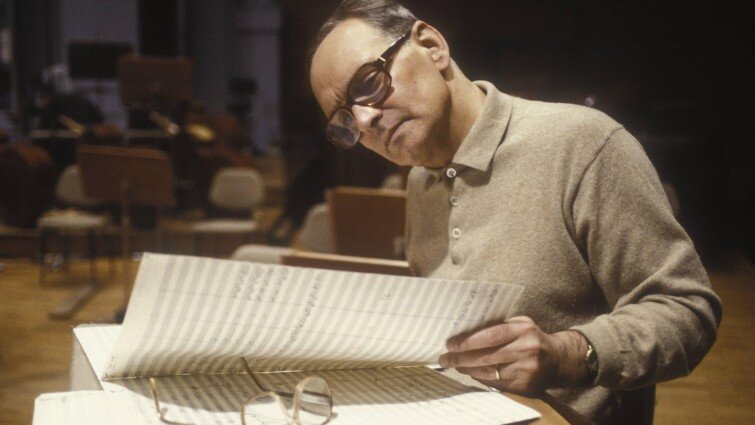Beyond the Scenes: "Dance of the High Plains" - Part 2 (Ennio Morricone and the Spaghetti Western)
In Part 1 of this blog series on my upcoming cinematic music video for “Dance of the High Plains” (which will also appear on my upcoming debut album titled Prelude), I talked about the composer of the original piece, Leo Brouwer, and I talked about Clint Eastwood’s influence on my visual aesthetic for this video.
In today’s blog, I’m going to talk about the influence of Ennio Morricone’s film compositions on my recording of “Dance of the High Plains” and how I evoked the vastness of the Altiplano region of South America in the intro section (audio sample toward the end).
Ennio Morricone is one of the most well-known film composers of the 20th century writing over 500 compositions for TV, film and the concert stage. However, it’s his work with Spaghetti Western film director, Sergio Leone, in the 1960s and 1970s for which he is most famous.
Ennio Morricone reviewing a score (yes, that’s what film and orchestral scores look like!)
Sergio Leone on the set of A Fistful of Dollars (1964) with Clint Eastwood
Spaghetti Westerns are Western films shot and directed in Italy. The genre was spawned by Sergio Leone’s massively successful 1964 film, “A Fistful of Dollars,” which also starred Clint Eastwood in his first leading role. Besides their Italian origins, Spaghetti Westerns are also characterized by their low-budget approach to film-making which forced some new innovations. One way that productions cut costs was by paring down the film scoring. In Hollywood Westerns of the day, composers often utilized expensive orchestras, but Morricone had to make do with more creative effects such has gunshots, horns, voices, whistles and the new electric guitar.
All of Morricone’s tricks are in this video including, at about the :50 mark, a spring-reverb drenched guitar part. If you don’t know what reverb is, check out my blog explaining it. I also wrote a blog on the specific type of reverb used in Spaghetti Western (and Surf Rock) called spring reverb.
I’ve included a demo recording of my version of “Dance of the High Plains.” The introduction in the first minute or so, uses a special type of digital reverb that is meant to sound expansive and dramatic. I will write a separate blog post on that type of reverb, which didn’t exist until the 1980s. But, if you skip to about 1:04, you will hear the same kind of spring reverb that Morricone used in The Good, the Bad, and the Ugly. I don’t use it as dramatically since the guitar is the only instrument in my recording and I wanted it to come through clearly, but, if you listen for the boing sound on the low notes at about 1:25, you’ll hear the effect more prominently. That boing sound is caused by the sound of the guitar literally traveling through metal springs! …and that’s how Ennio Morricone influenced my recording of “Dance of the High Plains.”
BONUS:
This piece, originally titled, “Danza del altiplano,” was composed for the classical guitar and is based on a Bolivian folk song (which is where the Altiplano region is and which I talk about in Part 1 of my blog series on the making of this music video). This piece also famously appeared in an episode of the Netflix series, The OA. If you want to hear how it sounds on classical guitar compared to my version on the electric guitar, as well as enjoy a great bit of cinematography around this piece, check out the video below.

